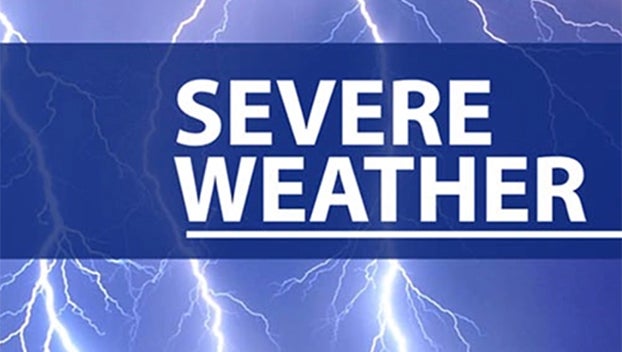As Venus crosses the sun, a rare treat for skywatchers
Published 5:21 pm Wednesday, July 30, 2014
The annals of European astronomy burst with famous names: Copernicus, Kepler, Halley.
Jeremiah Horrocks? Not so famous. But in 1639, the young Englishman became the first person known to witness one of the rarest events in the heavens: the passing of Venus across the face of the sun — a transit.
On Tuesday, Venus will again cross the sun, for just the sixth time since. It won’t do so again until 2117, making this the last transit of Venus for nearly everyone alive today.
Telescopes around the world — and up in space — will turn sunward as the roughly seven-hour transit begins at 6:03 p.m. Eastern time. As the black dollop of Venus inches along, scientists will examine the planet’s atmosphere and gather clues that may help them find Earth-like planets circling other stars.
“This is a full-court press,” said Jay Pasachoff, a transit tracker leading an expedition to the Haleakala Observatories high atop Maui in Hawaii. Pasachoff, chairman of the astronomy department at Williams College in Massachusetts, is also coordinating observations across a global network of solar telescopes.
In space, NASA’s most advanced sun-spotter, the Solar Dynamics Observatory, will stream the event to computer screens while banking gigabytes of data. “We are going to give the world the best data ever seen from a Venus transit,” said Dean Pesnell of NASA’s Goddard Space Flight Center in Greenbelt, Md. A special NASA Web site is preparing for a million viewers.
Transits of Venus are so rare because the planet’s orbit is tilted relative to the Earth’s. The two planets line up with the sun only four times every 243 years. (The timing between transits is odd: 121 1/2 years, then eight years, then 105 1/2 years, then eight years again.)
Johannes Kepler — that master of orbital mechanics — was the first to puzzle most of this out. In 1627, he predicted a transit would occur in December 1631, and then not again until 1761.
The first occurred on schedule, although no one in Europe could watch; the six-hour event happened at night there. Kepler missed it, too; he was dead by then.
Several years later, Horrocks was checking Kepler’s figures when he found an error, which revealed that Venus would make another transit in December 1639.
Horrocks jumped at the historic opportunity. He set up a telescope — a relatively new invention — and projected a six-inch image of the sun onto paper. His figuring showed that the black spot of Venus should nudge into the bright edge of the sun around 3 p.m.
The spot appeared on schedule. Horrocks traced it as it moved, the first record of this heavenly rarity. But it was winter in England and soon the sun set. Venus had moved just a smidge of the way across the sun, William Sheehan and John Westfall recount in their 2004 book “The Transits of Venus.”
Horrocks died tragically young, just 22, shortly thereafter.
The next set of transits, in 1761 and 1769, triggered scientific drama around the world. European powers sent 100 expeditions to Siberia, the South Pacific, Indonesia, India and other remote locales where the entire transit could be seen.
The most famous scientists and explorers of the day chased the event. Telescopes in tow, Captain James Cook sailed his first Pacific expedition, a seven-month voyage to Tahiti, and built an observatory there. All to watch a black dot on the sun for six hours.
Before Charles Mason and Jeremiah Dixon surveyed the Maryland-Pennsylvania border, the Royal Society of England dispatched them to Indonesia for the 1761 transit. They turned around soon after departing when a French ship shelled them and killed 11 crew members. But upon their return to England, the Royal Society threatened the pair with jail if they didn’t chase the transit. So they did, making it to Cape Town, in what is now South Africa, but no farther.
This was the big science of the time. And all for a single goal: to figure the size of the solar system. “This was the measurement to make,” said Pesnell.
Earlier in the 18th century, English astronomer Edmund Halley — of comet fame — had struck on a way to make this measurement with the transit. It requires viewers stationed as far apart as possible to measure the angle between Venus as it crosses the sun and two points on Earth. From those readings, pages of math would reveal the distance between the Earth and the sun.
This measurement requires precise timing, with observers noting to within a second when the dark disk of Venus enters the sun and leaves it.
“It’s not a spoiler to say all of the expeditions were unsuccessful” at arriving at a precise figure, said Lawrence Marschall, a professor of physics and astronomy at Gettysburg College in Pennsylvania.
The problem: As Venus approached the sun, a smudge, or what some described as a “black drop” appeared on the outer edge of Venus’ disk. This smudge made it difficult to note when Venus had actually entered the sun. Viewers at the same site disagreed by up to a minute.
Still, in one of the first examples of international scientific cooperation, Marschall said, the observations were eventually collected and sent to a scientist in Paris who made an estimate of the distance between Earth and the sun that was, all things considered, not far off — about 100 million miles (the actual distance is 93 million miles), much more than the scientists of the time had believed.
Space was, indeed, vast.
A century later, the transits of 1874 and 1882 saw the United States catch expeditionary fever. Congress allocated $200,000, a princely sum at the time, and tapped Simon Newcomb of the U.S. Naval Observatory to head the venture. Typical for government then as now, Newcomb went way over budget, spending close to $500,000.
The public got excited, too, and John Philip Sousa wrote the “Transit of Venus March.” (You can listen to a recording by searching the Library of Congress Web site, www.loc.gov) But soon scientific interest began to wane. Other methods had been developed to measure the solar system. By 1884, it was clear that the major impetus for future expeditions to see the transit would be adventure, and to see something rare.
That remains true today, as it was with the last transit, in 2004. Pesnell from NASA is taking a team to Fairbanks, Alaska, where the entire transit will be visible, and various adventure companies are sending tourists to remote Pacific islands.
And while the puzzle of the black drop, or smudge, has been solved — it’s an anomaly of telescope optics and the Earth’s atmosphere — other scientific questions remain, said Pasachoff. On Tuesday, sensitive telescopes should glimpse Venus’ outer atmosphere as sunlight passes through it. And measuring how much light Venus blocks will help astronomers calibrate space telescopes now searching distant stars for transiting planets.
For the rest of us, the event should inspire awe, Marschall said. “What’s impressive is this sort of clockwork nature of it, the notion that the universe is moving around very precisely and silently and taking no account of us.”
A few viewers may even think of Jeremiah Horrocks, who was ecstactic upon seeing the 1639 transit. He wrote, “Contemplate, I repeat, this most extraordinary phenomenon, never in our time to be seen again! The planet Venus, drawn from her seclusion, modestly delineating on the Sun, without disguise . . . .”





